Viewing the View
I felt compelled to take a trip to Buan county, to Wido island, and to the observatory post, which became, in reality, a series of trips. This made me think of the administrative district divisions, such as city, county, precinct or town, township, and district. I thought of the first person to divide the land into such small divisions and to name them one by one. This must be the reason why when we say that we live in Seoul, another question quickly follows: where exactly do you live in Seoul? A thoughtful heart that considers the distance between the two locations, and the easiest route through for both parties, can be helpful at the beginning of a relationship.
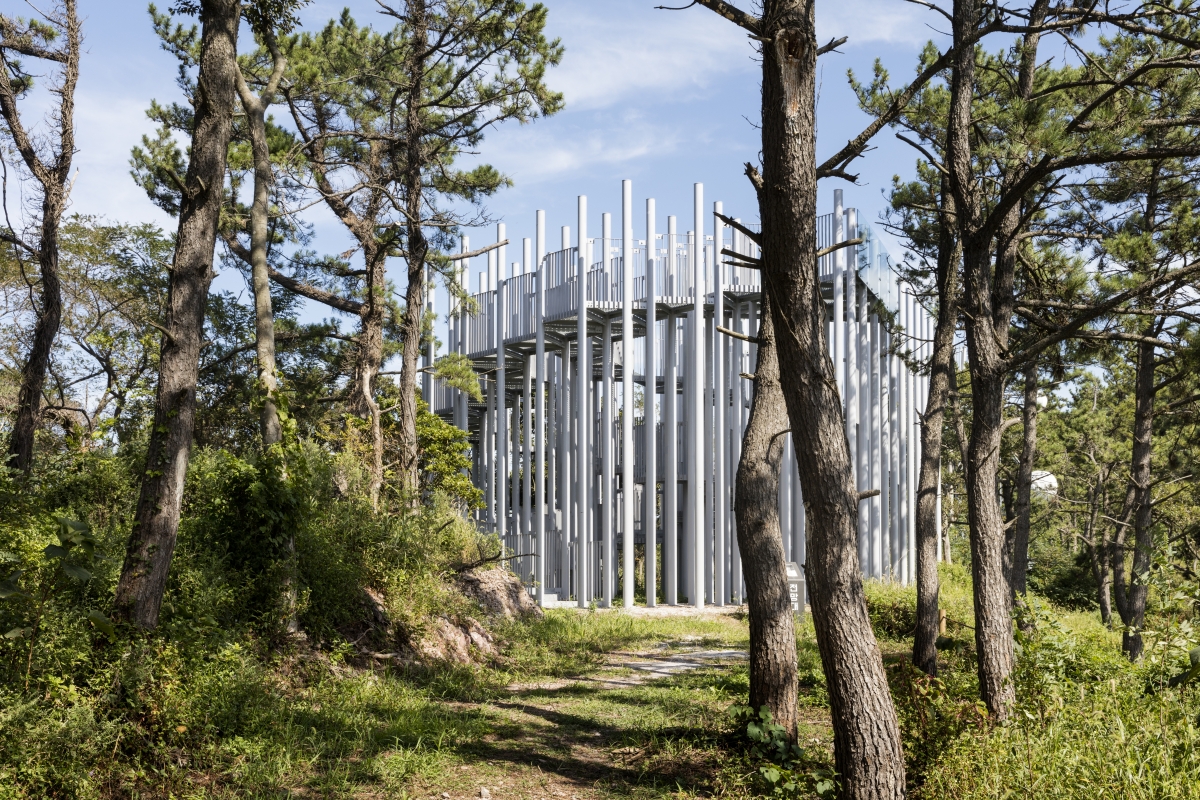
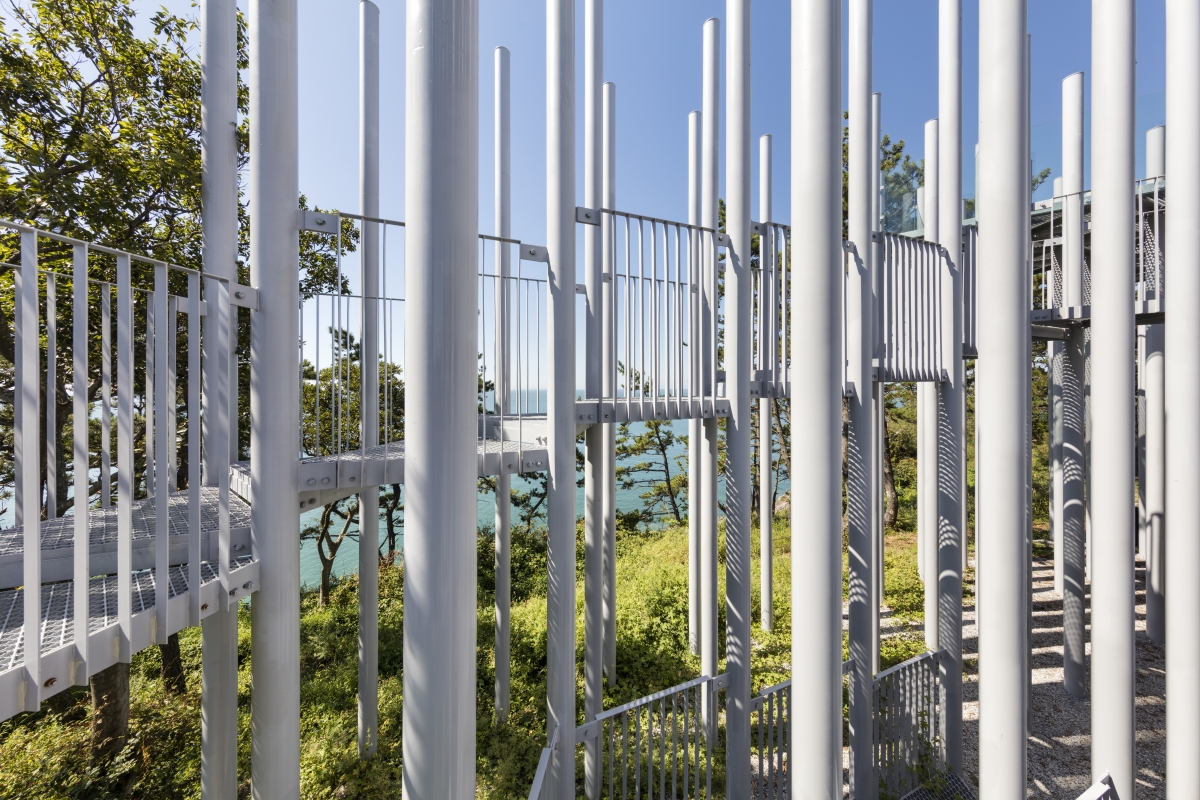
I headed for Wido via ship accompanied by the architect Seo Hyun, who designed the forest trail observatory post. Wido is an island that was used as the background to the Yuldo Country, featured in Heo Gyun’s Honggildongjeon. I had an uneasy feeling as I thought of all those people who tried to realise their individual ideals on an island because they couldn’t be realised on the mainland. The ‘Wi(蝟)’ character of Wido represents a porcupine, and this is probably as the island looks like a porcupine from above. Perhaps due to this preconception, the trees that came into view as we approached the island appeared to me as porcupine quills.
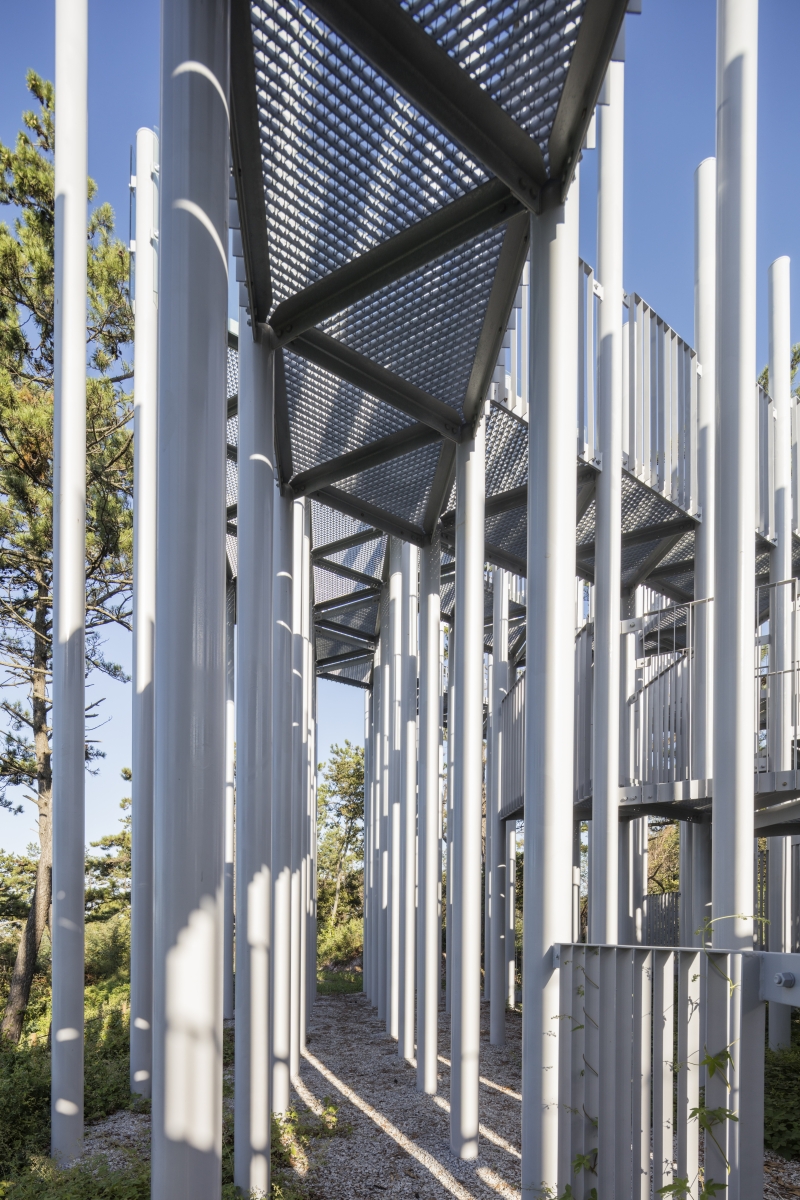
Upon reaching the observatory, I was rather taken aback. I was expecting a high-rise observatory post, but the forest trail observatory was more cosy in appearance. We had to climb a rather shallow but spacious staircase to reach the top of the observatory. There were small holes in the staircase to make one aware of one’s surroundings. Owing to the view of the green vegetation through the stairs and the warm sunlight shining on my head, my steps gradually became lighthearted. Seo Hyun explained that if the original observatory post is something that one has to look up towards, the forest trail observatory is something that ‘appears’ suddenly, and I agreed emphatically.
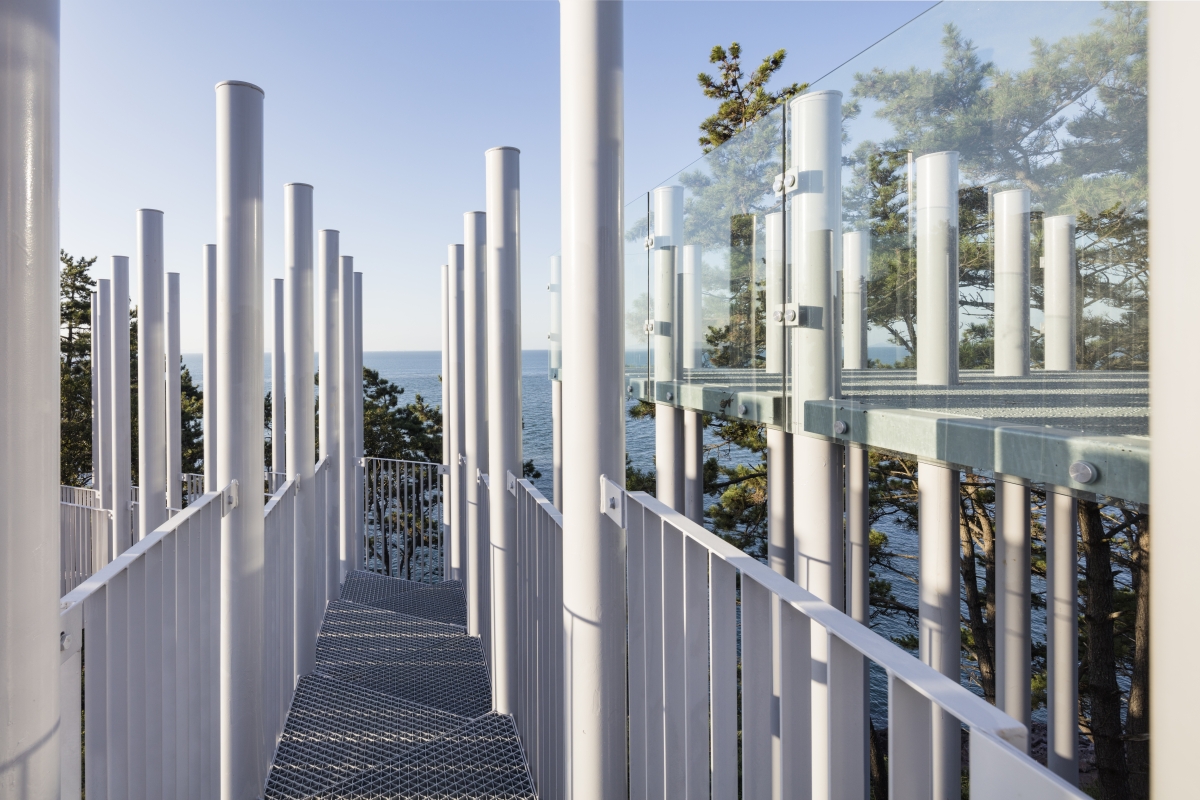
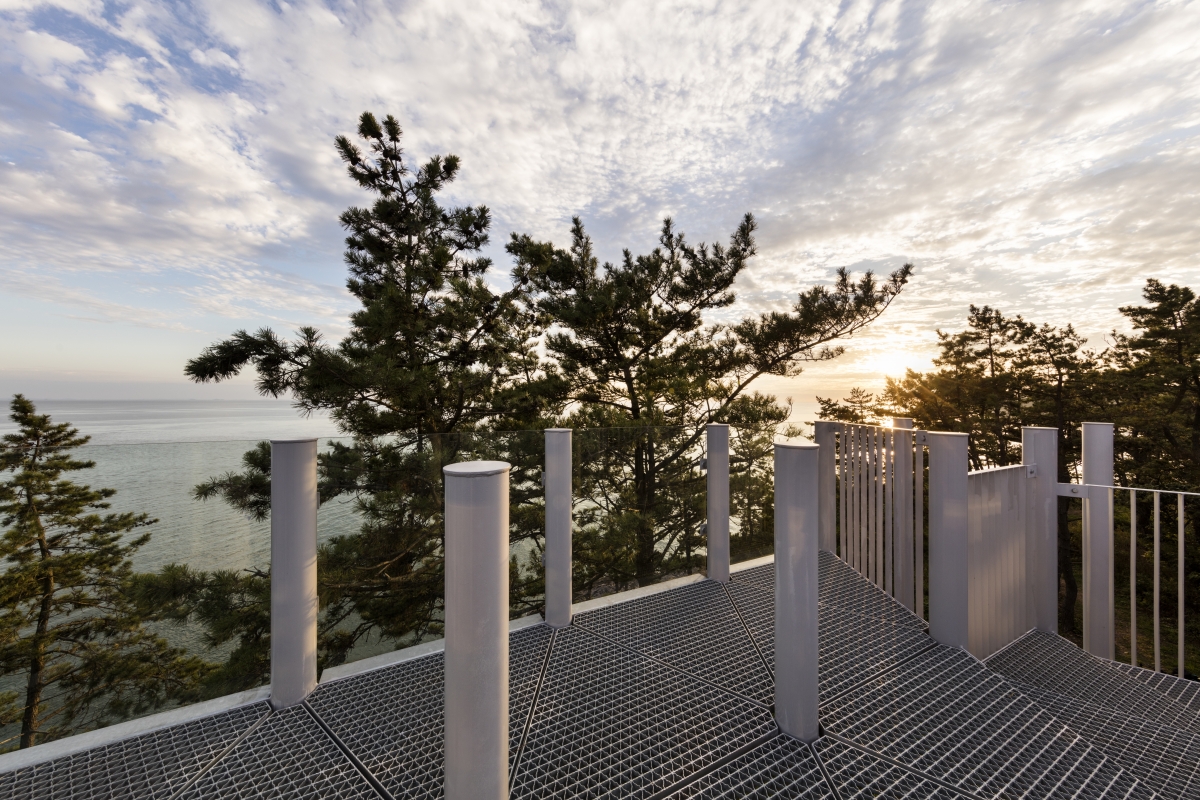
I think that the expression of ‘climbing up the observatory’ was a misrepresentation. Each step towards the observatory was a sort of ‘observation’ and provided a new view. It was not about reaching the top and looking downwards; rather, the journey to the top was meaningful in itself. It was a unique experience, continual moments of viewing the view.
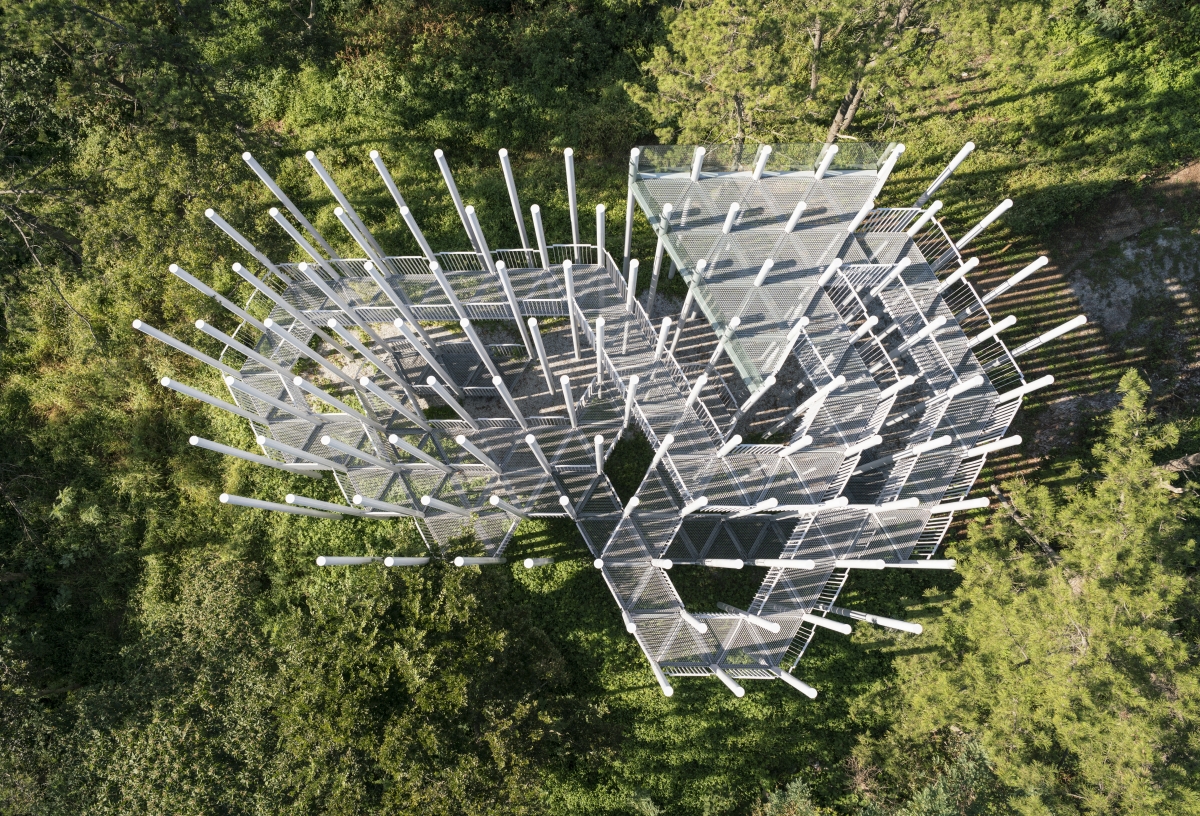
In the prologue to Seo Hyun’s Bookshelf of Imaginations (Hyohyoung Publishers, 2018), there is a passage that notes, ‘this town, full of syntax allied to its buildings, demands imagination, something that is revealed through a kind of description that mixes the context in a new way, and such imagination is the imagination of the humanities. It was an interesting work’. The idea of building an observatory post on the forest trail of Wido must have also come from such an imaginative effort. It is something that goes beyond simply connecting the sea and the sky to allow personal stories to be captured within the journey to the observatory itself. There will be countless variations in the search for the observatory as well as within the architectural context. They will be pleasant trips entailing different stories.
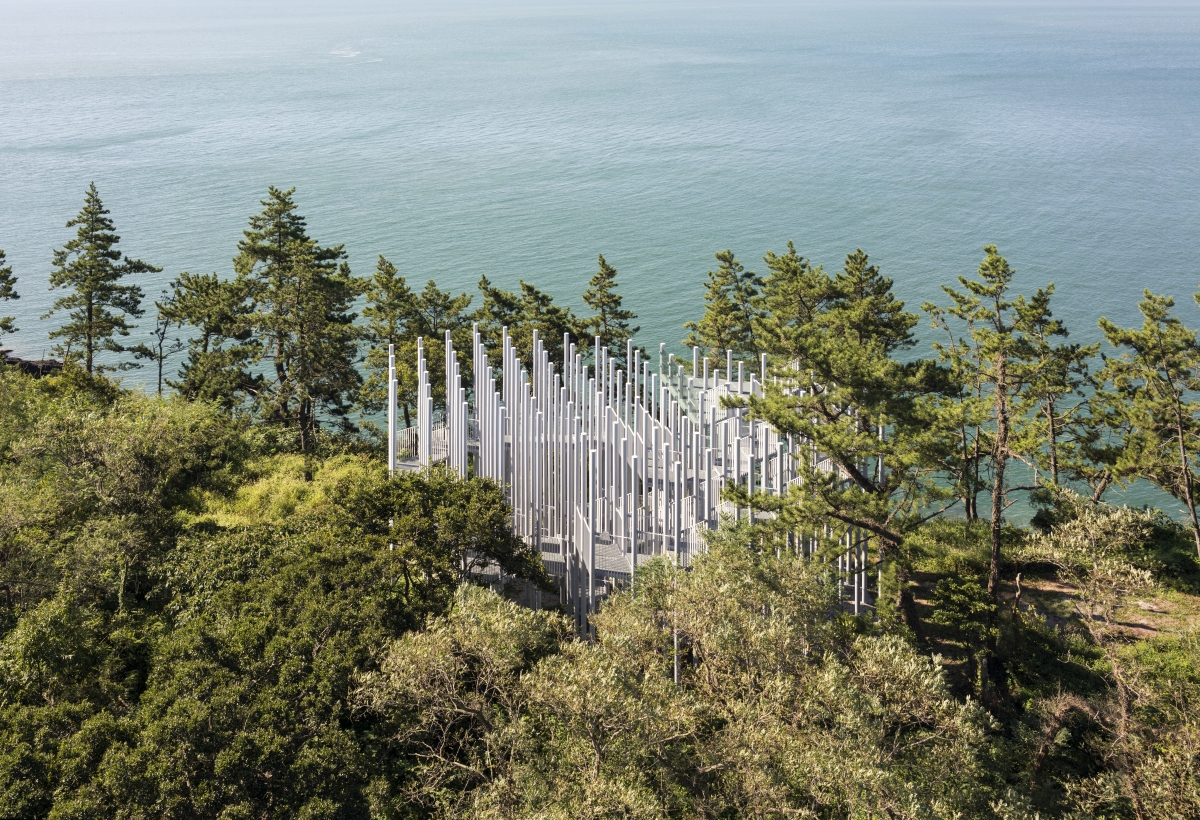
On my way back, I bought two packs of crackers and fed the seagulls. Looking at the crackers carried away by the sea wind, it made me think about life and its spontaneous destinations. It was as the close encounter I had with the sun on my trip to the forest trail, or as I suddenly thought of the poem upon arriving at Wido, or as I ironically couldn’t stop viewing while making the climb to the observatory post.
The island exists on its own, but it must be the fact it exists alone that it is called as an island. It will prompt us to desire the crossing over to that side. It will make us understand more deeply how the trip to the observatory post itself is as precious as the experience of the landscape above the observatory post. It will make us question ‘Where shall we go? What shall we see?’ rather than being burdened by ‘We must go there’ and ‘We must see that’. The series of thoughts that surface continuously must be what completes a trip.
Seo Hyun, Sosu Architects (Go Seokhong, Kim Mihee)
Park Yunsun, Kim Seona, Yang Hyeongwon
365-1, Dae-ri, Wido-myeon, Buan-gun, Jeollabuk-do
observation deck
648m2
115.94m2
9m
17.89%
steel structure
zinc-graiting, rust prevent paint (white)
THEKUJO
Samgyeong Construction, MiRoo Construction, Lucky
May – Sep. 2017
Sep. – Nov. 2017
Buan-gun





